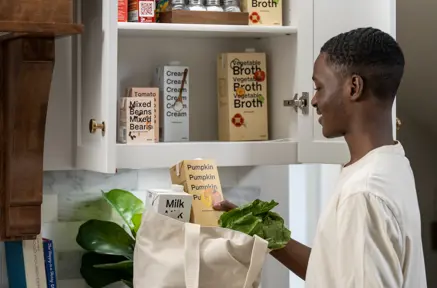Packaging the plant-based market

What came first, the packaging or the product?
When it comes to the global plant-based food and beverage market, how much of a role does consumer demand play in the number and variety of products available to us, and how much of a role does the packaging itself play?
Both segments hold a great deal of potential, with the plant-based food and beverage market predicted to reach $40.6 billion by 2030, and the food and beverage packaging markets on course to hit $714 billion and $199 billion respectively, also by 2030.
This growth is also reflected in the number of new products hitting supermarket shelves, with hundreds of plant-based products entering the US market in 2022 alone, including plant-based steak, salmon, foie gras, fish balls, and schnitzel.
The plant-based products of tomorrow
New ingredients starting to emerge include “fermented meat” – meat alternatives made using plant-based proteins like soy and pea combined with microbes like fungi – and plant-based cheeses that more closely mimic their animal-based counterparts. Nut-based creams and sauces also show a great deal of potential.

How packaging plays its part
As manufacturers keep pushing the boundaries of what’s possible with plant-based, that also means pushing the boundaries of what’s possible with how such products are packaged. Here, the focus is on sustainability, which has been a key factor in the growing shift towards more plant-based diets, with packaging suppliers turning to monomaterials and fiber-based materials. At SIG, sustainability is always a priority and with packaging materials like SIG Terra we are taking our commitment even further, lowering not only our own environmental footprint, but that of our customers and their customers.
Packaging is also key to product innovation, and more so in the plant-based sector where new ingredients and recipes are being tested constantly. Take shelf-stable packaging, which is designed to preserve its contents without the need to include additives, enabling manufacturers to offer more plant-based food made using entirely natural ingredients. Furthermore, carton packs can become a communication platform, educating consumers about new ingredients and products. Helping people expand their diets and, in turn, market growth.
What we offer
Our wide range of sustainable, shelf-stable packaging solutions spanning cartons, bag-in box and spouted pouches provide more options in terms of both packaging format and volume, helping the industry cater to different market requirements. The varied formats and sizes also offer consumers more choice, letting them buy products to suit their needs and, thereby, reduce food waste.

In part five of Food for thought, we continue where we end here: with a focus on packaging – this time, across all segments within the food and beverage market. What are the most popular packaging formats in general, and what is it about carton packs and spouted pouches in particular that offers value to manufacturers and consumers? Make sure you don’t miss out by subscribing to our bi-weekly SIG newsletter.
- March 14, 2024

Innovation and partnership to improve global food access

The matter of functionality

